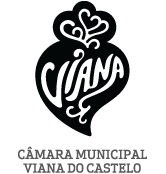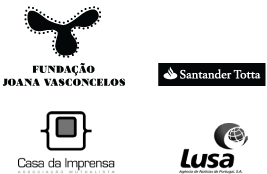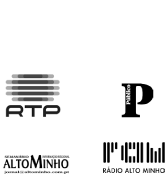The Minho Sea. Along the Atlantic, the land where Portugal was born and further expanded to the south reaching that place where land ceases to be. This is the region we got used to associate with green mountains and valleys much less with the untamed sea. For a long time I was intrigued about the nature of fishermen’s communities in this region. What they do, how they live, what they feel, what makes them so unique in a country with such a vast coastline where fishing is done all the way from Caminha to Vila Real de Santo António, in Azores and Madeira, and also in the rivers. What’s in this swathe of the “Portuguese Sea”? How do these people relate with the sea? The never ending cycle of going away and returning, the constant threat of never coming back – is this any different from the explorers who sailed towards the unknown? The answer came not to my surprise. What is unique to the Minho sea is, indeed, its people – something we could equally say about any other place in the world. The work is developed around these people –
a narrative and a documentary survey which I’ve been working on over the last months.
What stands out in this selection of photographs is the human element. Present in everything and even testified in the materiality of things. For instance, the boats – not only in the way these are built, as I observed in Darque, but also in how they convey humanity, mysticism and fearfulness in the very names which people choose to baptise them. Yet, similar to many other names found in so many other communities of fishermen and people of the sea. Although this trip was also made in land, most of it documents moments on board of the Deus Quer [God’s Wish], Virgem de Fátima [Virgin of Fátima], Esperança [Hope], Invejado [The Envied], Mar e Rio [Sea and River], Noé [Noah], and the Calvário da Vida [Life’s Calvary] – the naming is not only quite telling about people’s utter respect for the sea which ultimately threads their lives; perhaps it also says about the way they give themselves to Providence, both in plea and gratitude. The religious sentiment comes across abundantly in the conviviality among the communities – a sentiment tied to the narratives delivered by or emergent in the iconography and exacerbated by a life of constant uncertainty. Religious images abound in celebrations and festivities – Our Lady of Last Agony and Our Lady of Ínsua being two of the main ones, here documented – and also on board where I learned that representations of the Virgin Mary can side perfectly with a portrait of Dr Sousa Martins, a prominent man for the sort of popular mysticism not endorsed by the catholic church.
The same all-around presence of transcendence is found in the men and women themselves – demeanour and gestures, in speech and wording, or even in the way they decorate their bodies and in the rough signs carved and sketched onto the boats. In the die injected in sun-dried skins such as the modern and perfectly contoured tattoos displayed in Bruno’s body – a fisherman and musician and one of the many companions I met throughout this journey. Although Bruno lives alone with his bulldog Borat, he is always accompanied by his parents – perfectly printed in his right arm – and by the Mother of Christ – tattooed in his back in a much humanised version un-recalling the paleness of most conspicuous images and sculptures of the Virgin. As I already noted above, Bruno is among the many companions of this adventure whose names are too many to mention. But I would like to recall some of them. Hugo, who looks for lampreys in the River Lima for his seasonal livelihood when Rumo ao Destino is idle and docked. I also honour the masters who kindly took me on board with open arms, such as Alfredo and his son Vítor who grew up at the sea and sailed off to his own way; also, Marco, and Maria José and Henrique, a couple united in marriage in land and at sea. This work was made from and with them.
With that said, and it is worth noting again, this work is made of people from beginning to end even when not featured in the images. Everything is about people. When a returning boat draws the seagulls, this is only because men filled the boat with fish; if artwork items (such as cordage, nets, cage-traps, lined-up hooks, etc) are found to be photogenic, it is only because they were brought about by the hands of those who created it, those who manufacture and handle these items. What we have here is thus a chronicle – the living and appealing memory of people putting their lives on the line for a business whose profits go somewhere else. For they only know how to live with the sea, trotting the waves to cast nets and traps. And so, these are the heroes of the Minho Sea: not the ones away for months in the open ocean, but the men who, in humble vessels with barely a crew, do not go far from the shores more than two or three miles. The sea can be a bitch both in the Grand Whites of the Terra Nova and in the offshores of Viana, Caminha, Âncora, Foz do Neiva… And it will always be feared and loved by those who grew from and with the sea.
In conclusion, I would say this work portraits the human aspect of a particular swathe of the Atlantic sea that feeds men with bass, conger, whiting, pout, grey mullet, spider crab, coastal crab, crawfish, and octopus. To see it in the dish, while recalling the men and women who make this happen, changes everything. The flavour of such delicacies is seasoned with something no one can buy: respect.
Leonel de Castro
March 2018
x



